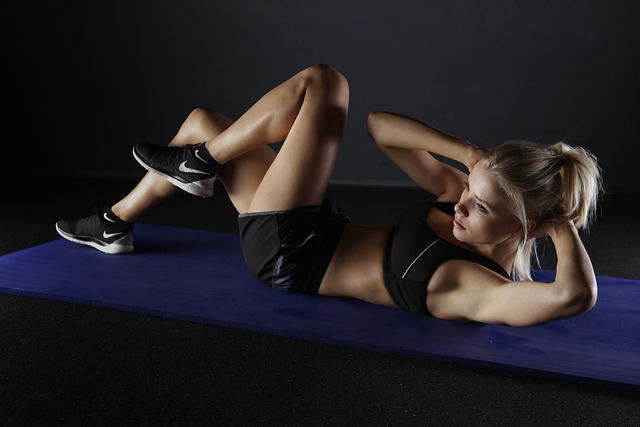Unleashing the Power of Functional Fitness

Functional fitness has gained immense popularity in recent years, becoming a buzzword in the health and wellness industry. This comprehensive guide explores what functional fitness is, its benefits, how it differs from other forms of exercise, common mistakes to avoid, and the key components that make up an effective functional fitness program. Whether you’re a fitness enthusiast or a beginner looking to improve your overall health, this article will provide valuable insights to help you harness the power of functional fitness.
For more information and knowledge you can enroll in this online video course Functional Fitness Training (Training Methodology For Real Life Application.)
What Is Functional Fitness?

Functional fitness refers to a type of exercise that prepares your body for real-life movements and activities. Unlike traditional workouts that often focus on isolated muscle groups, functional fitness emphasizes movements that mimic everyday actions. These exercises typically involve multiple muscle groups and joints, promoting better coordination, balance, and strength.
Functional fitness workouts are designed to improve your ability to perform daily tasks, such as lifting, bending, twisting, and reaching, with greater ease and efficiency. By focusing on movements that are relevant to your daily life, functional fitness helps enhance overall physical performance and reduces the risk of injury.
Benefits of Functional Fitness

1. Improved Everyday Performance
One of the primary benefits of functional fitness is its ability to enhance your performance in daily activities. Whether you’re carrying groceries, playing with your children, or working in the garden, functional fitness exercises strengthen the muscles and joints needed for these tasks, making them easier and more efficient.
2. Increased Strength and Flexibility
Functional fitness routines incorporate a wide range of movements that target various muscle groups. This helps build overall strength and flexibility, improving your body’s ability to handle different physical demands. As a result, you become more resilient and less prone to injuries.
3. Better Balance and Coordination
Functional fitness exercises often involve balance and coordination challenges, which can significantly improve your stability and body control. This is particularly important as we age, as maintaining good balance and coordination can help prevent falls and related injuries.
4. Enhanced Core Stability
A strong core is essential for overall functional fitness. Many functional exercises engage the core muscles, including the abdominals, obliques, and lower back. Strengthening these muscles provides better support for your spine and pelvis, leading to improved posture and reduced risk of back pain.
5. Greater Mobility and Range of Motion
Functional fitness promotes better joint mobility and a greater range of motion, allowing you to move more freely and comfortably. This is especially beneficial for older adults or individuals recovering from injuries, as it helps restore and maintain functional independence.
6. Reduced Risk of Injury
By focusing on movements that replicate real-life activities, functional fitness helps improve your body’s mechanics and movement patterns. This can reduce the risk of injury during both exercise and daily activities, as your muscles and joints become more adept at handling various stresses and loads.
7. Time Efficiency
Functional fitness workouts often incorporate multiple muscle groups and joints in a single exercise, making them highly efficient. You can achieve a full-body workout in a shorter amount of time compared to traditional strength training routines that isolate specific muscle groups.
Difference Between Functional Fitness and Other Exercises

Traditional Strength Training
Traditional strength training typically involves exercises that target specific muscle groups using machines or free weights. While this approach can effectively build muscle mass and strength, it often lacks the real-life application of functional movements. Functional fitness, on the other hand, emphasizes compound movements that engage multiple muscle groups and joints, promoting better overall coordination and balance.
Cardio Workouts
Cardio workouts, such as running, cycling, and swimming, primarily focus on improving cardiovascular endurance. While these exercises are essential for heart health and overall fitness, they may not address the strength, flexibility, and mobility needed for functional movements. Functional fitness combines elements of strength, flexibility, and cardio, offering a more comprehensive approach to fitness.
High-Intensity Interval Training (HIIT)
High-intensity interval Training (HIIT) involves short bursts of intense exercise followed by periods of rest or low-intensity activity. HIIT can be an effective way to burn calories and improve cardiovascular fitness. However, functional fitness workouts are typically more moderate in intensity and focus on improving everyday movement patterns, making them suitable for individuals of all fitness levels.
Common Mistakes with Functional Fitness

1. Neglecting Proper Form
One of the most common mistakes in functional fitness is neglecting proper form. Since functional exercises often involve complex movements, maintaining correct form is crucial to prevent injuries and maximize the effectiveness of the workout. Always prioritize technique over the amount of weight lifted or the number of repetitions performed.
2. Overcomplicating Workouts
While functional fitness can include a variety of exercises, it’s important not to overcomplicate your workouts. Stick to basic, foundational movements that mimic real-life actions. Overly complex exercises can increase the risk of injury and may not provide additional benefits.
3. Ignoring the Core
The core plays a vital role in functional fitness. Neglecting core exercises can lead to poor posture, decreased stability, and a higher risk of injury. Incorporate core-strengthening exercises, such as planks and rotational movements, into your routine to ensure a strong and stable foundation.
4. Skipping Warm-Ups
Skipping warm-ups is a common mistake that can lead to injuries. Functional fitness workouts often involve dynamic movements that require flexibility and coordination. A proper warm-up prepares your muscles and joints for the demands of the workout, reducing the risk of strains and sprains.
5. Focusing Solely on Strength
While strength is an important component of functional fitness, it’s not the only aspect. Balance, flexibility, and coordination are equally crucial for overall functional performance. Ensure your workout routine includes exercises that address all these elements to achieve a well-rounded fitness level.
6. Lack of Progression
Progression is key to continuous improvement in functional fitness. Sticking to the same routine for an extended period can lead to plateaus and decreased motivation. Gradually increase the intensity, complexity, and resistance of your exercises to keep challenging your body and making progress.
Click for detailed information
The Components of Functional Fitness

1. Strength
Strength is a fundamental component of functional fitness. It involves the ability to exert force against resistance, which is essential for performing daily activities and preventing injuries. Functional strength training focuses on compound movements, such as squats, deadlifts, and lunges, that engage multiple muscle groups simultaneously.
2. Flexibility
Flexibility refers to the range of motion around a joint. Good flexibility allows your muscles and joints to move freely and efficiently, reducing the risk of injury. Functional fitness incorporates dynamic stretching and mobility exercises to improve flexibility and prepare your body for various movements.
3. Balance
Balance is the ability to maintain stability and control over your body’s position. It is crucial for performing everyday tasks and preventing falls. Functional fitness exercises, such as single-leg stands and stability ball exercises, enhance balance and proprioception.
4. Coordination
Coordination is the ability to execute smooth, accurate, and controlled movements. Functional fitness enhances coordination by incorporating exercises that require precise movement patterns, such as agility drills and multi-directional movements.
5. Endurance
Endurance is the ability to sustain physical activity over an extended period. Functional fitness improves both muscular and cardiovascular endurance, enabling you to perform daily activities with less fatigue. Circuit training and high-repetition exercises are effective ways to build endurance.
6. Core Stability
Core stability involves the strength and control of the muscles surrounding your spine and pelvis. A strong core provides a solid foundation for all functional movements, improving posture, balance, and overall performance. Core stability exercises include planks, bridges, and rotational movements.
7. Mobility
Mobility is the ability of your joints to move freely through their full range of motion. Functional fitness emphasizes mobility exercises to enhance joint health and prevent stiffness. Foam rolling, dynamic stretches, and mobility drills are commonly used to improve joint mobility.
Creating an Effective Functional Fitness Program

To create an effective functional fitness program, it’s essential to incorporate exercises that address all the components of functional fitness. Here’s a sample program to get you started:
Warm-Up (5-10 minutes)
- Dynamic Stretching: Perform dynamic stretches to prepare your muscles and joints for the workout.
- Foam Rolling: Use a foam roller to release muscle tension and improve blood flow.
Workout (30-40 minutes)
Circuit 1: Strength and Mobility
- Squats: 3 sets of 12-15 reps
- Lunges: 3 sets of 12-15 reps per leg
- Push-Ups: 3 sets of 10-12 reps
- Deadlifts: 3 sets of 12-15 reps
- Dynamic Hip Flexor Stretch: 3 sets of 30 seconds per side
Circuit 2: Balance and Coordination
- Single-Leg Balance: 3 sets of 30 seconds per leg
- Stability Ball Plank: 3 sets of 30-45 seconds
- Agility Ladder Drills: 3 sets of 1 minute
- Medicine Ball Throws: 3 sets of 10 reps
Circuit 3: Core Stability and Endurance
- Plank with Shoulder Tap: 3 sets of 20 taps
- Russian Twists: 3 sets of 20 reps
- Bicycle Crunches: 3 sets of 20 reps
- Mountain Climbers: 3 sets of 1 minute
Cool-Down (5-10 minutes)
- Static Stretching: Perform static stretches to relax your muscles and improve flexibility.
- Deep Breathing: Practice deep breathing exercises to calm your mind and body.

Conclusion
Functional fitness is a holistic approach to exercise that prepares your body for real-life movements and activities. It offers numerous benefits, including improved daily functioning, injury prevention, enhanced athletic performance, better balance and coordination, increased strength, weight management, and mental health benefits. By focusing on multi-joint movements, core stability, balance, and flexibility, functional fitness sets you up for success in everyday life.
To reap the full benefits of functional fitness, it’s important to avoid common mistakes such as poor form, overtraining, neglecting warm-up and cool-down, lack of progression, and ignoring core strength. By incorporating strength training, cardiovascular training, flexibility and mobility exercises, balance and coordination drills, and functional movements into your routine, you’ll build a well-rounded and effective functional fitness program.
Remember, the key to functional fitness is consistency and progression. Start with exercises that match your current fitness level and gradually increase the intensity and complexity as you become stronger and more proficient. With dedication and proper training, functional fitness can help you achieve a healthier, more capable body that performs efficiently in all aspects of life.
For more tips and guidance on functional fitness, stay tuned to our blog. We regularly update our content with the latest research, workout plans, and expert advice to help you on your fitness journey.
Follow for more information and knowledge on Functional Fitness Training (Training Methodology For Real Life Application.)
